Callie Easterly’s work at The Conservation Fund is helping to expand hunting and fishing access on a national wildlife refuge by more than 12,000 acres—read the latest Q&A in our Women Conservationist Wednesday series
We love talking to women in the conservation workforce who are very clearly forces of nature themselves. Callie Easterly, a native Texan and the senior major gifts officer at The Conservation Fund, is no exception.
Forget for just a moment that she runs an incredible hunting lodge for the organization, hosting small parties of waterfowl hunters to showcase the benefits of wetland restoration projects. Now consider that in the span of eight years she went from receptionist to executive director of a nonprofit focused on getting inner city kids outdoors and in touch with their food. That’s before she helped build a sustainable grazing program on conserved lands in the unique Gulf coastal grasslands of Texas.
But back to that hunting lodge. It’s on the 12,376-acre Sabine Ranch, which will soon be added to McFaddin National Wildlife Refuge as public land open to hunting, fishing, hiking and birdwatching. And Callie helped raise the more than $30 million needed to piece the original ranch back together and convey the land to the U.S. Fish and Wildlife Service.
Her story is so compelling, it’s no wonder she can convince people to open their wallets for conservation. She shares a little bit of that story with us here.
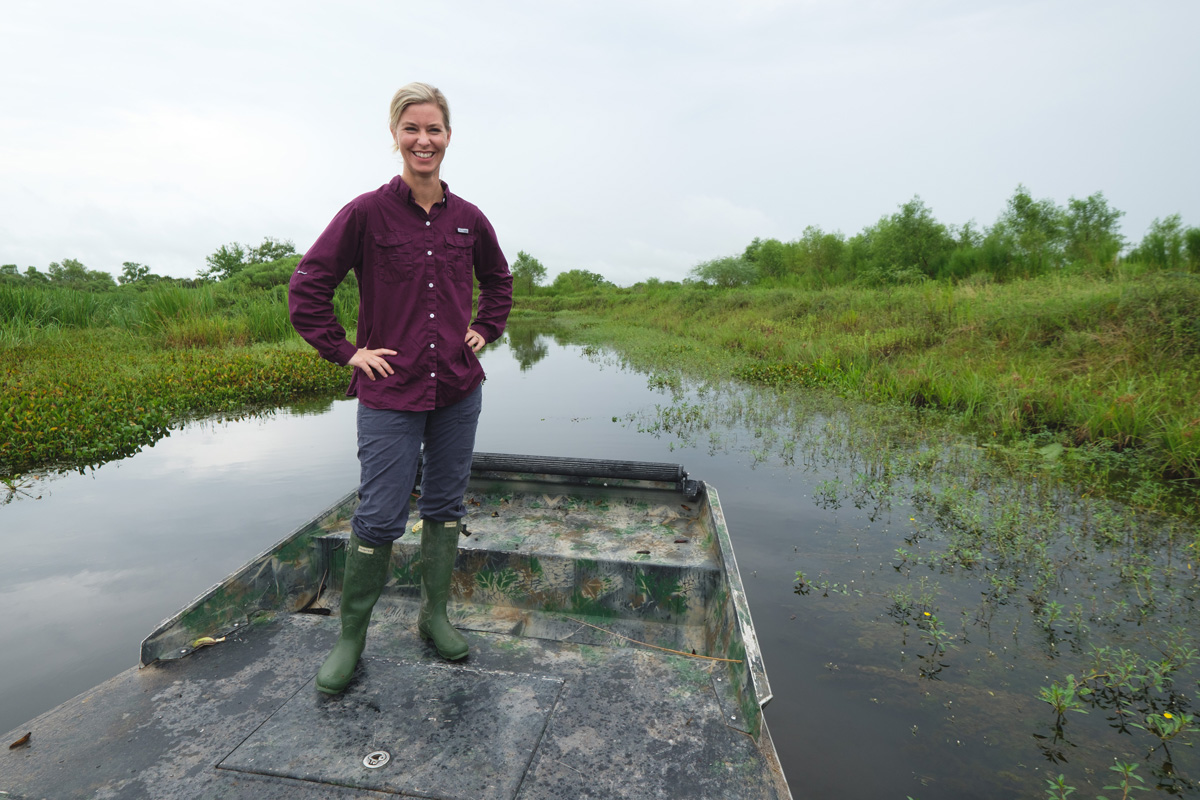
TRCP: How were you introduced to the outdoors?
CALLIE EASTERLY: I grew up in a small town outside Houston with a lot of rice farms, and I started hunting deer with my dad on the Thanksgiving holidays. Our local grocery store offered these individual meat lockers to store your venison, and we basically lived off what we harvested. I shot my first deer when I was 9 years old and totally got the bug.
For a while, I lived in Seattle and did more fishing, but when I came back to Texas and met my husband—he’s an avid outdoorsman—I really got back into hunting. And I was able to marry it with my lifelong interest in gardening and knowing exactly where my food comes from.
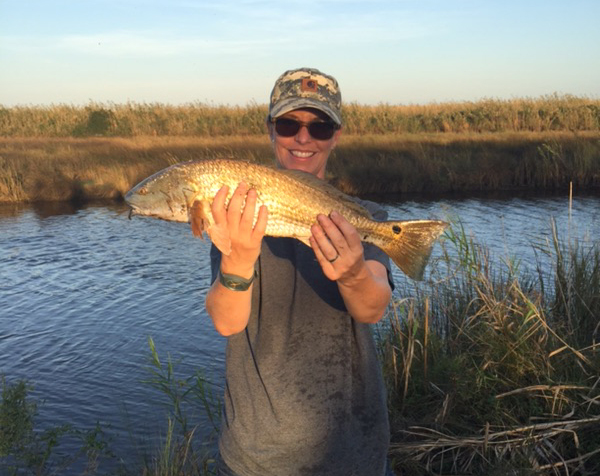
TRCP: And what led you to work in conservation?
EASTERLY: It started out as kind of a fluke. I was working with adults with disabilities and interpreting sign language, and I loved being able to help people communicate, but I really felt like I was missing out on sharing this growing passion I had for gardening and food security. I didn’t know exactly how I was going to do it, but I quit my job and ended up working as a receptionist for a Houston nonprofit called Urban Harvest, which builds gardens at inner city schools and takes kids into the outdoor classroom to learn about nutrition.
After only a few weeks, their fundraising person quit and they needed someone to write a grant application—so I tried it. We got the grant and things just took off from there. By the end of my eight years there, I had become executive director and was meeting a lot of inspiring people in the food movement.
Eventually, I wanted to do more with sustainable agriculture, and I got the opportunity to go back to my roots—literally my hometown of Katy, Texas—and work for the Katy Prairie Conservancy. One of the preserves is a working cattle ranch, where I was able to build a program that uses cattle as a land management tool for the benefit of other wildlife and water quality. And when I got the call from The Conservation Fund, I’d been consulting for a number of organizations on how to harness those Gulf oil spill recovery dollars to improve wildlife habitat and shellfish populations. So, it’s been a slow growth into my role at Sabine Ranch today.
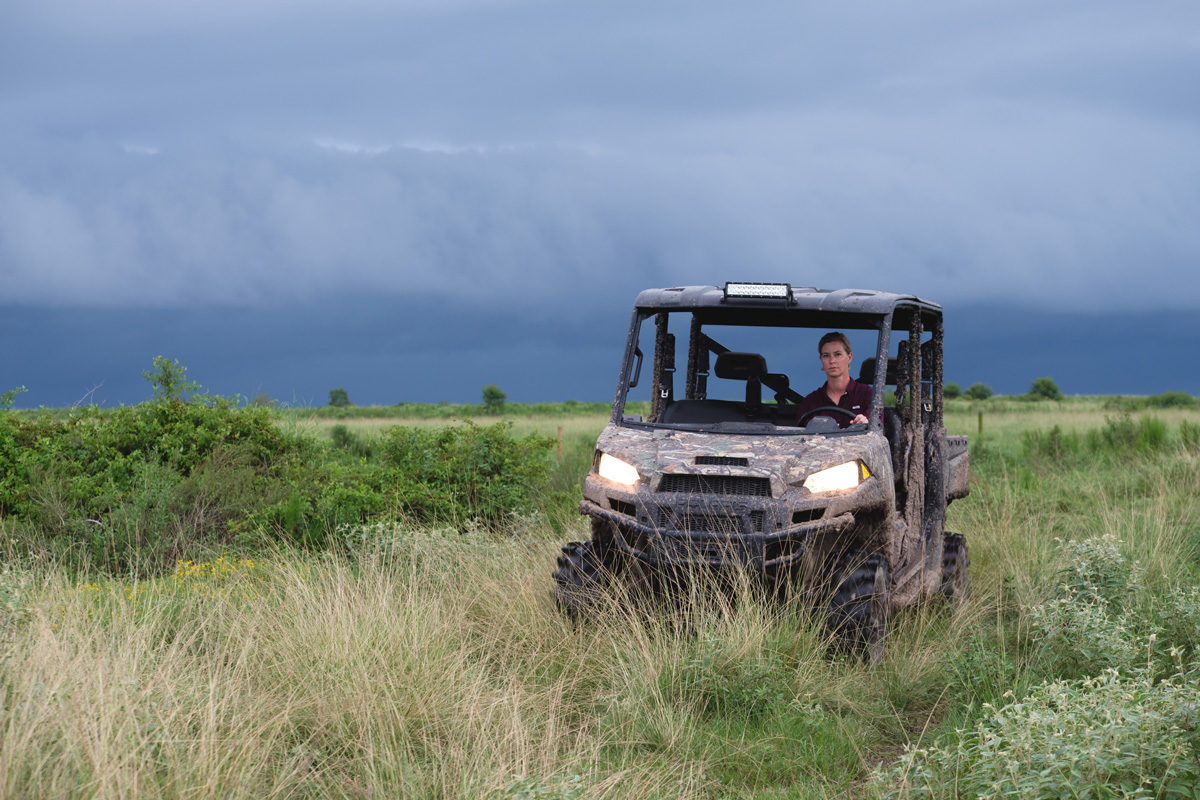
TRCP: So, why take people hunting to get them support the project?
EASTERLY: I think it helps to highlight hunting and conservation as a nice marriage of ideals. Actually bringing guests out into this fantastic waterfowl habitat to do something they enjoy helps them understand what we’re doing and why expanding the refuge is such a big win for Texas.
The habitat is unbelievable. The ranch is a key part of the largest contiguous marsh system in Texas, which buffers inland communities from saltwater intrusion and sends freshwater flows to the rest of the refuge. When The Conservation Fund purchased the land, it had been managed to almost pristine condition by the previous owner, and here’s how we could tell: Just three weeks after Hurricane Harvey in 2017, this land was bone dry. The wetlands were working exactly like they are supposed to, filtering stormwater and pushing it out to the Gulf cleaner than it was before.
I believe every problem in the world can be solved with education, and taking people on an epic hunt rarely fails to make people feel like we’re all in this together. The hunt itself is really fun, but it’s also a palatable introduction to conservation for many people.
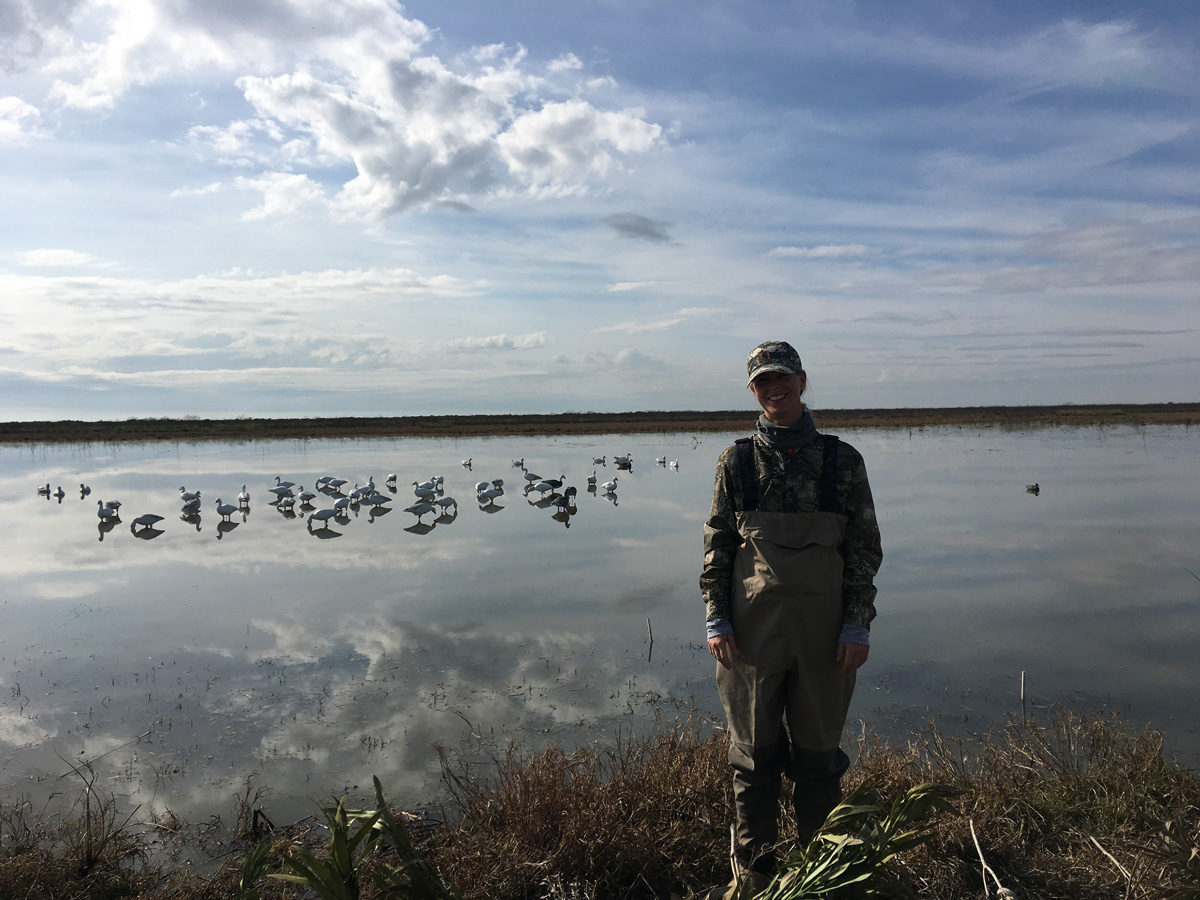
TRCP: How do you think we can do a better job, as conservationists?
EASTERLY: We need to tell better stories. We need to broaden our target audience and, as nonprofits, be more accepting of smaller gifts—we’ll meet more potential champions in the process. I talk to young people and see what resonates with them. I might practice a pitch with a friend who doesn’t hunt and just watch for the moment they raise their eyebrows.
For a long time, the environmental movement has meant “no, no, no.” That “no” has alienated a lot of folks. We have to say “yes” sometimes. Cities have to grow, so we explain why some places should be conserved. You illustrate how the health of habitat and wildlife is connected to the health of cities. We paved over some prairies and now there are no geese; there’s no hunting. Houston didn’t grow up, it grew out—we paved over wetlands and now we’re flooding. You explain that it’s hard to go back.
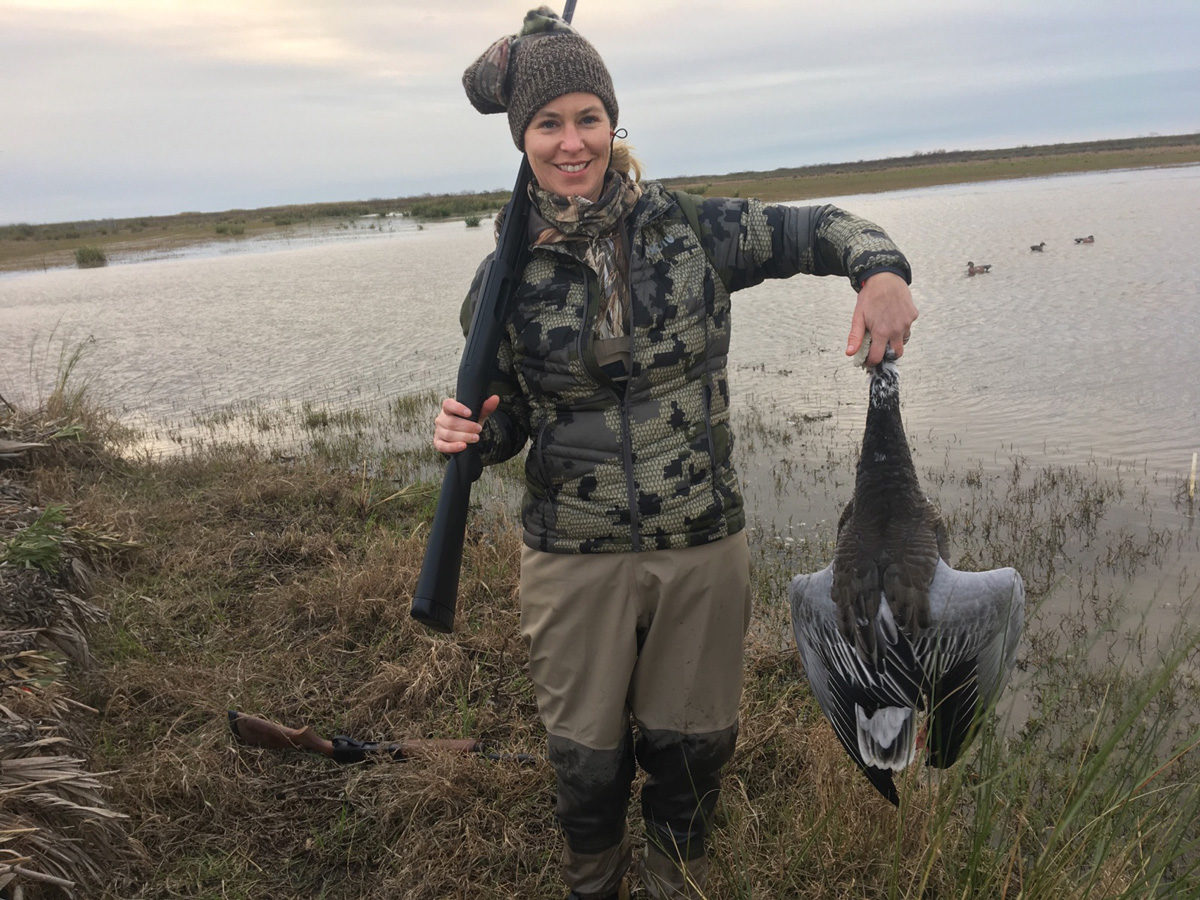
TRCP: So many women are taking up hunting in adulthood because of their interest in knowing where their food comes from. How can a beginner find the confidence to get outside on her own and just go for it?
EASTERLY: I’ve felt that lack of confidence, too—you have to give yourself over to it and allow yourself to make mistakes. You’ll miss. You’ll use the wrong fly. It’s trial and error. The moments you improvise because you forgot some gear or fall in and get soaking wet are going to be the most memorable anyway.
I don’t know how we tell ourselves it’s OK to fail. All I know is that sometimes you’re in the marsh getting eaten alive by bugs, and you’re calling and calling and nothing comes in. It’s not your spread, there’s just no ducks. It won’t be the most epic experience every time.
So, focus on the camaraderie of being up before dawn, passing a thermos of coffee around, being cold and sleepy together, telling stories, and watching the sun rise with friends. You can’t force the perfect hunt. In the morning, when you’re excited about the mere possibility of what the day may hold—make that feeling endless.
Photos by Shannon Tompkins






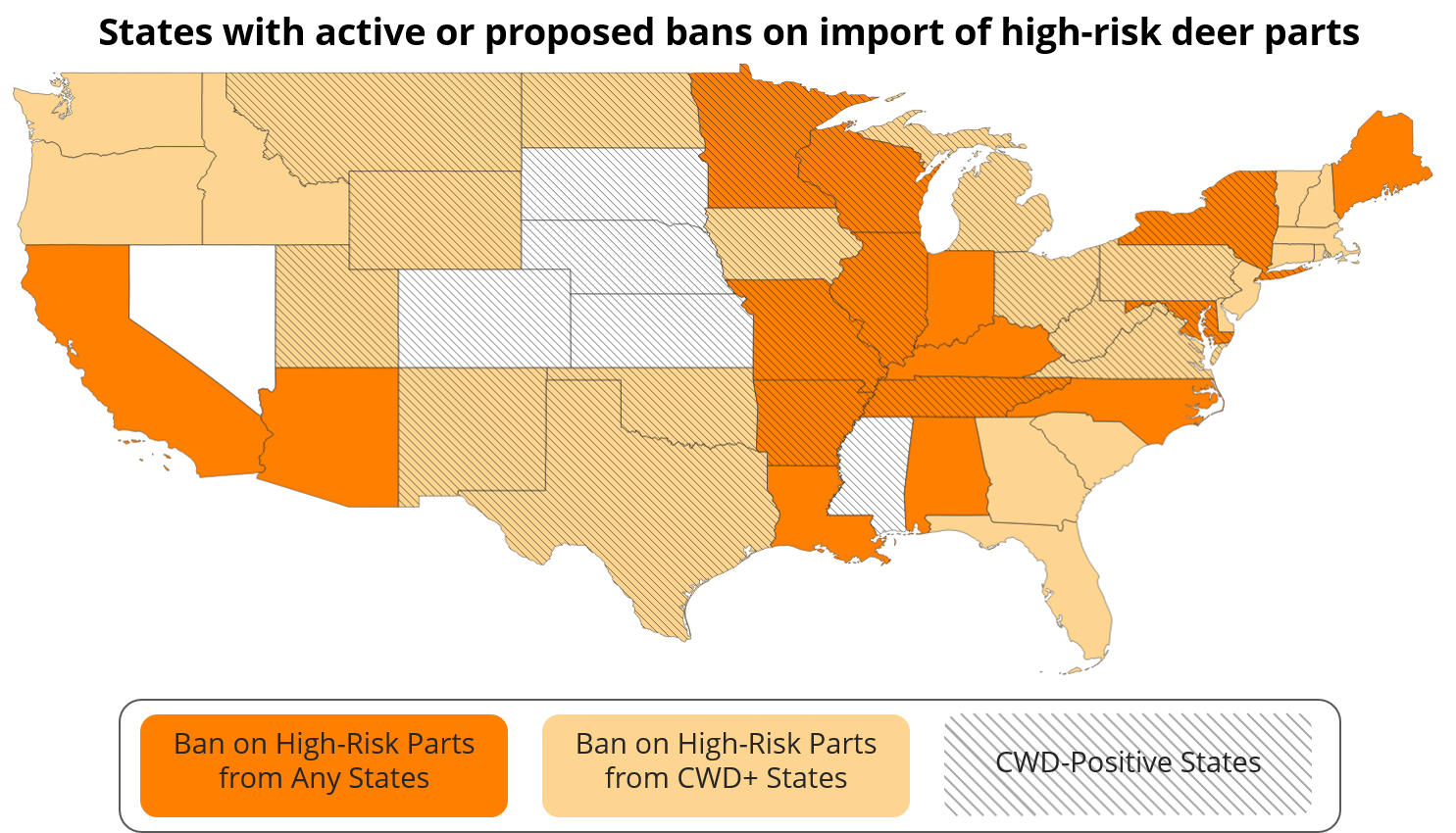
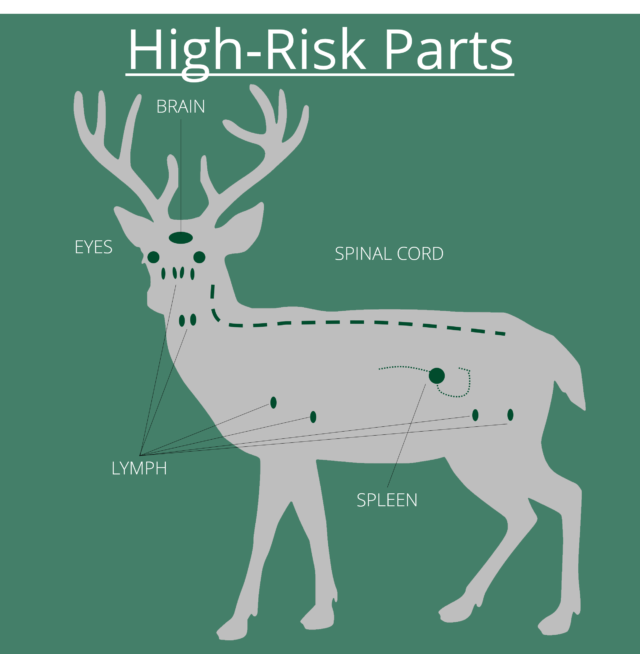
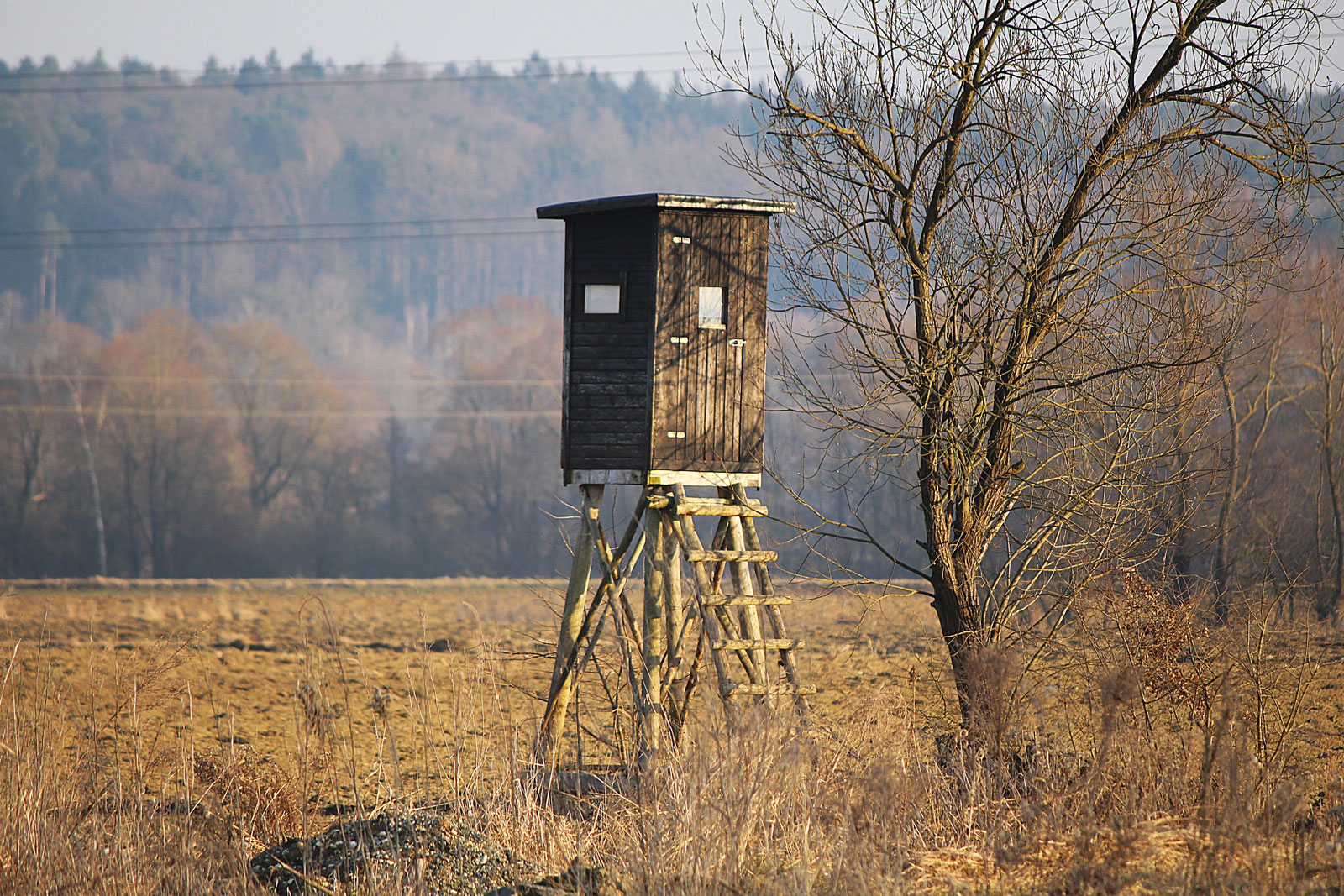
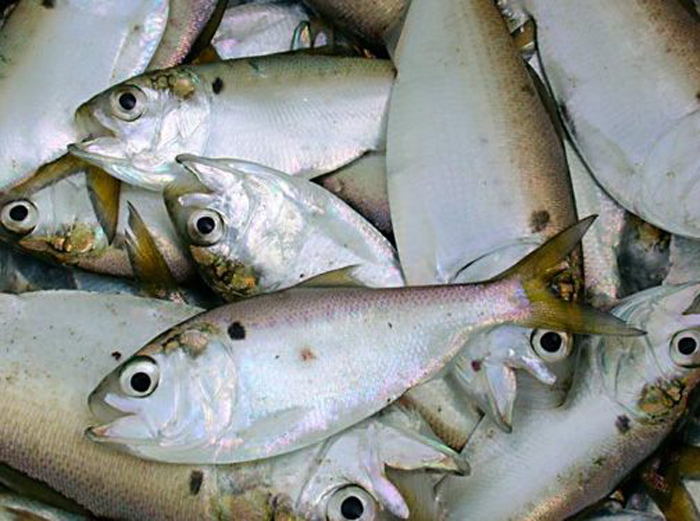




Please fight to keep Medhaden stocks healthy.
I appreciate TRCP’s support on this issue. Someone has to take a position on this.
With the Presidents and his staff pushing deregulation every group associated with doing what they want is doing what they want. We experienced this in Michigan with a commercial fish farm that was open in a facility operating with 19th century technology. It cost local conservation groups several hundred thousand dollars to finally shut it down.
The company had convinced the legislature that they were creating jobs which in reality would only added 2.5 jobs however what they were doin would eventually result hundreds of jobs lost in addition the lost tax revenue to the area.
Who is performing the impact study to prove or disprove the statements? How is the reduction in stride bass population being determined.
We can’t just raise our hands and say this wrong these days, the evidence must be as clear as the nose on the Presidents face and the director of the EPA.
Every member of congress from Maine to Florida needs to be flooded with emails and phone calls. There also needs to be evidence of lost revenue from the loss of sports fishing. This would everything from bait shops to hotels and restaurants.
This must be stopped!
So you are saying this certification gives them 4 years to do something that is already having a negative impact on the environment, and wildlife that depend on that environment.
Four years to continue to break the MSC Principle 2: Environmental impact of fishing
Fishing operations should allow for the maintenance of the structure, productivity, function and diversity of the
ecosystem (including habitat and associated dependent and ecologically related species) on which the fishery
depends.
This sort of thinking has been our problem for decades. This mindset allows companies to destroy our environment for their own profit.
Omega is based out of Reedville Virginia and keeps that town afloat. The townsfolk consider any criticism from “come heres “ unwelcome even though Mr Reed was a “come here”. The townsfolk have the attitude that most of the Maryland and Virginia waterman have — a “leave us alone we know what we are doing” parochialism.
Keep up the good work but be careful with these folk.
Regards and good luck.
Menhaden are as vital to the health of the Atlantic fisheries as the ocean itself is to the health of the menhaden.
This proposal smells fishy, you cannot take away any species food source and not expect bad news for that species.
A revolt is in order it appears. The existing setup is too cheaply bought and sold by thugs.
I agree with the post but it would be more effective if it were more carefully written
This food sorce is vital to the strippers and must be protected
I’ve watched the slick promotion videos for another company, Physio Tru, promoting Omega 3 Fatty acids: EPA, DHA and DPA, claiming menhaden are a “waste” fish. These companies have to be held accountable, or better yet, shut down.
WHERE ARE THE peace boat GROUP? GET THEM TO BLOCK THE BASTARDS AT SEA THANK YOU GUYS DON SEABEES WW2
At 67 years of age I have personally witnessed the the depletion of fishing stocks. If this is not altered drastically we will be lucky to find an occasional sea robin or dog fish on your line, and be thrilled to catch that. I remember catching cod, whiting, ling cod, fluke ,stripers ,and bluefish,in abundance. While never keeping fish to excess, we rarely ever went home empty. If we can’t use our resources responsibly, then we won’t fish or hunt at all.
Trump and his unqualified administration is destroying America
The Atlantic States marine Fisheries Commission reports in Feb 2019 :”The preliminary results indicate 2017 female spawning stock biomass was 151 million pounds, below the SSB threshold of 202 million pounds, indicating the stock is overfished. ” With that recent data in hand it is ludicrous that a prime Striped bass food source be allowed to be exploited.
Industry should not come before our wildlife. This is ridiculous that their claiming this fishery sustainable
Certainly the scientific evidence and common sense direct us to conserve our Atlantic coast resource population of nursery baitfish (mendaden). Our fisheries are stressed and in a phase of managed recovery. Harvesting this critical resource would seem to put the entire fishery at risk to profit an unsustainable and closely held industry. We can certainly source quality omega fatty acids and fertilizers elsewhere. The jobs created are not worth the potential damage.
Amazing to think a London based group can certify a Canadian Company- Cooke Industries (owner of Omega Protein ) to overfish US waters using very liberal standards for a fee from the fisheries they oversee! Criminal
Turn the tables on those promoting these products. Social media is a double edged sword. Use it to call out those on K Street that lobby for these companies and the TV talking heads that get paid to push these products. I’m knocking on the door of 70 and fished for stripers and blues from the Bay to the Sound (always catch and release). These magnificent fish should be enjoyed by all future generations of outdoors men and women. Back in the day, there was a singer song-writer by the name of Joni Mitchell who did a song about ‘you don’t know what you got until it’s gone’. I hope this does not apply to this group of fish. We called the menhaden, bunker. It seems that far to much of the peoples natural resources are going to foreign countries. If you want a rush, fly fish for Blues and Stripers. We tied flies to look like sand ells.
After 40 years owning my own charter fishing business I had to retire. You can’t take the public on a charter and not produce a catch for them. Retired in 2012 after seeing our fish stocks plummet to an all time low. Still nothing being done.
I moved to the Ches. bay area in 1985 and have a background in biology and geology and have fished since I was 3 years old.. I remember acres upon acres of adult menhaden scattered in all directions in the bay. Chopper blues were literally everywhere. What a sight, and what a blast to hook up every cast with a blue well over 10 pounds! Can anyone tell me when they last saw this? The big blues seem to no longer waste their time where there is nothing to eat. Everyone knows what a healthy fish looks like. For years now, the stripers don’t look healthy. Many look skinny and undernourished. I guess when OMEGA cannot find a single school of bunker to exploit, they will want the striped bass removed because they’ll say it was the rockfish that ate all their bunker. I believe the MSC is acting as a (paid) puppet/lobbyist for OMEGA. The MSC’s certification is invalid, lacks the scientific basis for certifying anything, and acts as a lobby for the commercial fishing industry like OMEGA. Any certification coming from MSC has the same validity as a certification from Pee Wee Herman!!! So sad to see an issue that 99.9% of the folks familiar with it knows the common sense answer and solution…..yet nothing is done to fix it……Sad, Sad, Sad! Shut em down, there’s a good reason why they are banned by all other states BUT Virginia, WE need to follow suit.
Do not let this become political as item # 15 comments, This has been going on for decade’s . I live on the bay and have seen this for too long .
WHY NOT LIST THE GROUPS, ANY LOBBYISTS AND POLITICIANS WHO ALLOW OMEGA TO CONTINUE AS STATED. THEN, FISHERMEN ETC., AND GROUPS SUCH AS TRCP. COULD VOICE THEIR CONCERNS TO THOSE INVOLVED.